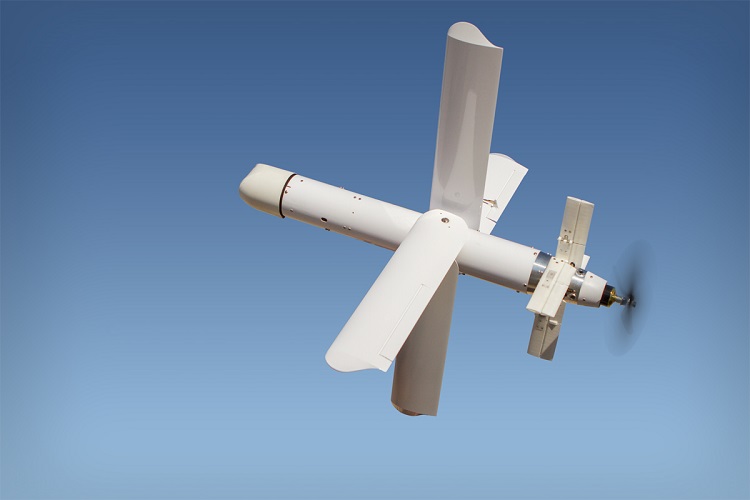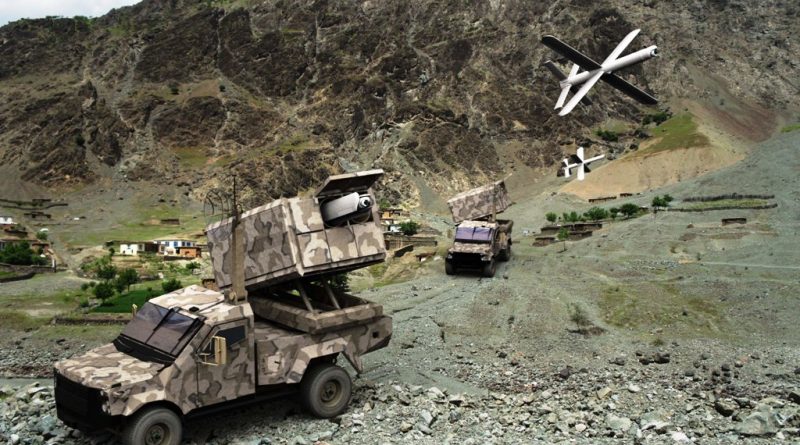It is widely believed that Israeli kamikaze (suicide) drones played a key role in Azerbaijan’s victory over Armenia in the Nagorno-Karabakh conflict last year. Now, the US looks interested in exploring the loitering munitions from the Jewish country.
The US military is set to test two advanced combat drones developed by Israeli company UVision later this year, reported Breaking Defence.
According to UVision, representatives from the US Army, Air Force, Navy and US Special Operations Command would take part in these tests scheduled for October 2021, at the Dugway Proving Ground in Utah.
Loitering munitions or kamikaze drones are usually low-cost, and easy-to-operate, making them popular with the armed forces of various countries.
According to Avi Mizrachi, CEO of UVision, the US military has expressed interest in procuring the company’s Hero drones, particularly the Hero-30 and the Hero-400 variants.
The Hero Series Drones
The Hero-30 is a tactical, infantry-level expendable Unmanned Aircraft System (UAS). It weighs around 3 kg and is equipped with a warhead of 0.5 kg, and has a Line-of-Sight (LoS) controlling up to 40 km from the operator.
It can remain in the air for 30 minutes from its launch. The acoustic signature of the aircraft is effectively reduced by its electrical propulsion scheme. The Hero 30 is also equipped with spring-loaded wings/fins and its twin-bladed propeller is located at the rear of the tubular, missile-shaped body.

According to the company, a special version of the Hero-30 may be provided to the US. It will be a lighter model, with a capacity to carry a 1.2-pound warhead, and will also boast an extended endurance, UVision said.
The Hero-400 is capable of engaging a range of stationary or moving targets, such as armored vehicles, main battle tanks (MBTs), entrenched and fortified positions as well as targets in enclosed urban environments. The system can also conduct intelligence, surveillance, and reconnaissance (ISR) operations, according to the company.
It is 2.1 m long and has a wingspan of 2.4m and a maximum take-off weight of 40kg. The mid-section of the UAS has four fixed-planar wings in a cruciform configuration, which enables an increased lift and maneuverability. Its deployable wings further enable the system to conduct an attack mission at any angle with pinpoint strike capabilities.
The Hero-400 is equipped with a large, multi-purpose, high-explosive warhead weighing around 10 kg. The warhead provides an improved penetration and high-precision terminal engagement accuracy. The munition can engage targets independently or in a man-in-loop mode.

In its independent mode, the weapon travels along a pre-ascertained flight path using its onboard GPS sensors. In the man-in-the-loop mode, the system is remotely controlled by an operator from a ground station through an integrated line-of-sight data link.
Further, the system can also be operated from a launch rail or a modular multi-tube canister, which can be deployed on land, air as well as sea platforms, according to Air Force Technology.
The Israeli Harop System
During last year’s Nagorno-Karabakh conflict, Azerbaijan used, among other drones, the Harop UAS manufactured by Israel Aerospace Industry (IAI). And its kill rate caught the attention of many militaries across the globe.
Hikmet Hajiyev, a foreign policy advisor to Azerbaijani President Ilhan Aliyev, had stated that the Israeli drones, particularly the Harop, were deployed against Armenia in the conflict. He called the Harop “very effective” and mentioned that the Israeli technology helped Azerbaijan in providing security and safety to its nationals, reported The Times of Israel.
The Harop is a stand-off loitering weapon system, which can locate and attack targets accurately. The system serves as an Electro-Optically guided attack weapon and can be launched from ground-based launchers. The Harop can be controlled by “controlled via a two-way data link for full man-in-the-loop operation”, IAI said.
The Harop integrates the characteristics of a missile and a UAV and can conduct missions without depending on other external systems for targeting and mission intelligence. It is programmed to independently fly to a predetermined ‘holding area’ where it loiters, and its positions and status can be checked by an operator.

The operator can select the Harop and then direct it to a target area, and select a target. Once the target is selected, the Harop can track the target and detonate its warhead on the target on impact.
Azerbaijan’s advanced drone capabilities, based on the Israeli Harop and the Turkish drones, were significant in its victory on Armenia, noted experts. The UAVs, especially the kamikaze drones, enabled Azerbaijan to adopt a “military strategy away from a more traditional blitzkrieg assault”, said Matthew Bryza, Senior Fellow at the Atlantic Council, and also a former US Ambassador to Azerbaijan.
The low-rick, precision-strike strategy helped Azerbaijan destroy high-value Armenian military assets such as air defense missile systems and armored vehicles.
Use Of Drones By Non-State Actors
Along with militaries, non-state actors and terrorist organizations such as Islamic State were also found to be using loitering munitions. The widespread use of drones in conflicts in Iraq, Syria, and Yemen highlights the easy availability of commercial drones.
Armed with explosives, such drones are being used to attack military and civilians alike, reported Al Jazeera.
In Yemen, the Houthis have reportedly used drones effectively. Though militarily inferior to Saudi Arabia, the Houthis are now equipped to attack the country’s vital infrastructures, including the oil refineries.
Mauro Gilli, senior researcher at the Centre for Security Studies, Polytechnic of Zurich was quoted as saying that “these developments have shown that without serious counter-measures, counter-systems, and training, even these relatively unsophisticated capabilities can exert significant effects and damage”.





